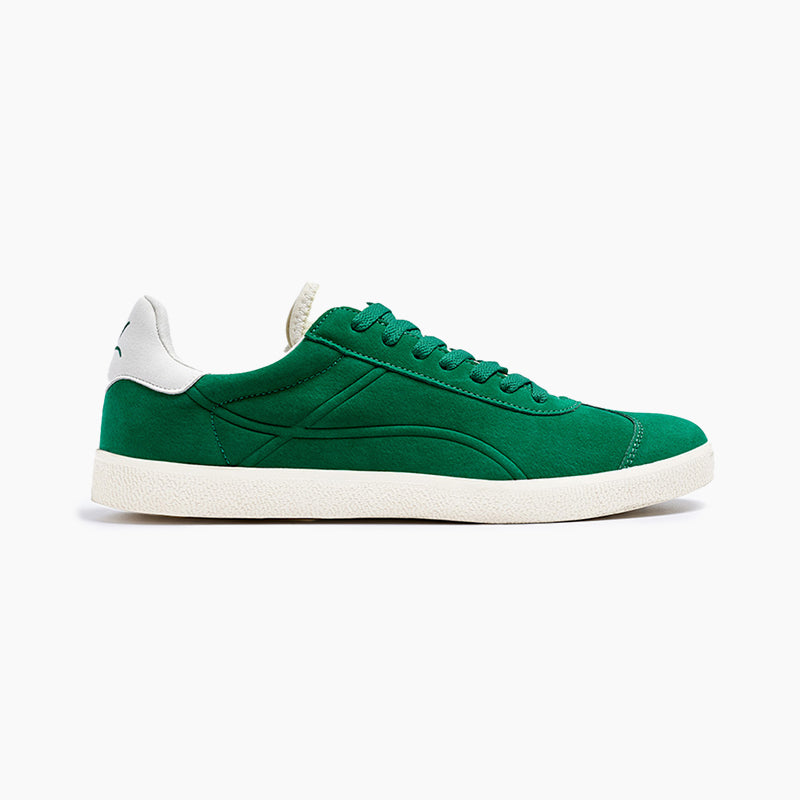Discover the Different Types of Footwear for Every Style

Footwear is an essential part of our daily attire, serving both functional and aesthetic purposes. From protecting our feet to making fashion statements, the right pair of shoes can significantly impact our comfort and style.
With numerous types of footwear available, understanding the various options can help you make informed choices that align with your style and needs.
Understanding Footwear
Before delving into the different types of footwear, it's important to understand what constitutes footwear. According to the Cambridge English Dictionary, footwear refers to "shoes, boots, or any other outer covering for the human foot." This broad definition encompasses a wide range of styles designed for various occasions and functions.
Categories of Footwear
Footwear can be broadly categorised based on design, functionality, and formality. The primary categories include:
-
Athletic Shoes: Designed for sports and physical activities, offering support and cushioning.
-
Casual Shoes: Everyday footwear that prioritises comfort and versatility.
-
Formal Shoes: Elegant designs suitable for professional settings and special occasions.
-
Boots: Covering the foot and extending above the ankle, often used for protection or fashion.
-
Sandals: Open-toed designs are ideal for warm weather.
-
Traditional Footwear: Styles that reflect cultural heritage and practices.
Exploring Different Types of Footwear
Let's delve into some popular types of footwear within these categories:
Athletic Shoes
Athletic shoes, commonly known as sneakers, are engineered for physical activities but have become a staple in casual wear due to their comfort and style. They come in various forms tailored to specific sports, such as running shoes with enhanced sole support and tennis shoes designed for lateral movements.
Key Features
-
Supportive Soles: Provide cushioning and reduce impact during activities.
-
Breathable Materials: Ensure ventilation to keep feet dry.
-
Durable Construction: Withstands rigorous movements and wear.
Casual Shoes
Casual shoes offer a blend of comfort and style, making them suitable for daily activities. This category includes various designs that cater to different preferences and occasions.
Examples
-
Loafers: Slip-on shoes that provide a polished yet relaxed look.
-
Ballet Flats: Inspired by ballet shoes, these flats are versatile and feminine.
-
Canvas Shoes: Lightweight and breathable, perfect for leisurely outings.
-
Espadrilles: Comfortable shoes with rope soles, often worn in warm climates.
Formal Shoes
Formal shoes are designed to complement professional attire and evening wear, emphasising elegance and sophistication.
Examples:
-
Pumps: Closed-toe heels that add height and grace to an outfit.
-
Oxfords: Lace-up shoes known for their sleek design, suitable for business settings.
-
Derby Shoes: Similar to Oxfords but with open lacing, offering a slightly less formal appearance.
-
Brogues: Characterised by decorative perforations, ideal for semi-formal wear.
Boots
Boots are versatile and can be worn for both functional purposes and fashion statements. They vary in length, material, and design.
Examples:
-
Ankle Boots: End at the ankle, suitable for various outfits and seasons.
-
Knee-High Boots: Extend up to the knee, often paired with skirts or dresses.
-
Combat Boots: Durable and rugged, originally designed for military use but now popular in casual fashion.
-
Hiking Boots: Designed for rough terrains, providing ankle support and durability.
Sandals
Sandals are ideal for warm climates, offering breathability and ease. They range from simple designs to more elaborate styles.
Examples:
-
Flip-Flops: Minimalist design with a Y-shaped strap, perfect for beach outings.
-
Gladiator Sandals: Characterised by multiple straps, reminiscent of ancient Roman footwear.
-
Wedge Sandals: Combine the openness of sandals with the added height of wedges.
-
Slide Sandals: Feature a single strap across the foot, offering convenience and style.
Traditional Footwear
Traditional footwear reflects cultural identities and practices, often handcrafted using age-old techniques.
Examples:
-
Moccasins: Soft leather shoes originating from Indigenous North American cultures.
-
Espadrilles: Canvas shoes with esparto rope soles, traditional in Spain.
-
Geta: Wooden sandals from Japan, elevating the foot with wooden teeth.
-
Kolhapuris: Handcrafted leather sandals from India, known for their durability.
Types of Footwear for Ladies
Women's footwear encompasses a vast array of styles, each serving different purposes and fashion sensibilities. Understanding the types of footwear for ladies can aid in selecting the perfect pair for any occasion.
Heels
Heels add height and elegance, making them a popular choice for formal events and professional settings.
Varieties:
-
Stilettos: High, thin heels that create a striking silhouette.
-
Kitten Heels: Short, slender heels offering a subtle lift.
-
Block Heels: Thicker heels provide more stability and comfort.
-
Wedge Heels: Distribute weight evenly for better balance and support.
Flats
Flats prioritise comfort without compromising on style, suitable for extended wear.
Varieties:
-
Ballet Flats: Simple and chic, easily paired with various outfits.
-
Loafers: Closed-toe slip-ons that offer a sophisticated yet casual appeal.
-
Mules: Backless shoes that are easy to slip on and off.
-
Mary Janes: These feature a strap across the instep, adding a touch of elegance.
Boots for Women
Boots are a winter staple but can also be worn in other seasons, depending on the material and design.
Popular Choices:
-
Thigh-High Boots: Make a bold fashion statement while keeping the legs warm.
-
Chelsea Boots: Elastic-sided ankle boots known for their sleek look.
-
Cowboy Boots: Featuring a pointed toe and stacked heel, ideal for Western-inspired fashion.
Choosing the Right Footwear
When selecting footwear, consider the following factors:
-
Comfort: Ensure proper fit and support.
- Occasion: Match footwear to the formality of the event.
-
Durability: Invest in quality materials for longevity.
-
Style Preference: Choose designs that align with personal taste.
Ludic: Official Footwear Partner of CSK
Ludic has established itself as a reputable name in the footwear industry. As the official footwear partner of Chennai Super Kings (CSK), an Indian Premier League (IPL) franchise for the 2025-26 season, Ludic is bringing innovation and comfort to cricket enthusiasts and athletes alike. Their commitment to quality and style makes them a top choice for sports and casual footwear.
Wrapping Up
Understanding the different types of footwear enables you to make informed choices based on your lifestyle and needs. Whether you’re looking for everyday comfort, athletic performance, or formal elegance, there is a footwear category suited for every occasion. By investing in high-quality and well-fitted shoes, you can enhance both your style and foot health.
For more insights into fashion and footwear trends, visit Ludic footwear.
Suggested read: Types of sneakers
FAQs about Types of Footwear
What are the different types of footwear?
The different types of footwear include athletic shoes, casual shoes, formal shoes, boots, sandals, and traditional footwear. Each type serves a unique purpose, ranging from everyday comfort to specialised functions.
How do I choose the right types of footwear for daily wear?
Selecting the right types of footwear depends on comfort, durability, and purpose. Casual shoes like loafers and sneakers are ideal for daily wear, while sandals work well in warm weather.
What types of footwear for ladies are best for all-day comfort?
The best types of footwear for ladies for all-day comfort include ballet flats, loafers, block heels, and cushioned sneakers. These options provide support while maintaining style.
What is footwear made of, and how does the material affect comfort?
Footwear is made from materials like leather, canvas, rubber, and synthetic fabrics. Breathable materials like mesh enhance comfort, while leather offers durability and elegance.
How often should I replace my type of footwear?
The lifespan of types of footwear depends on usage and quality. Running shoes should be replaced every 500-800 km, while formal and casual shoes last longer with proper care.


































